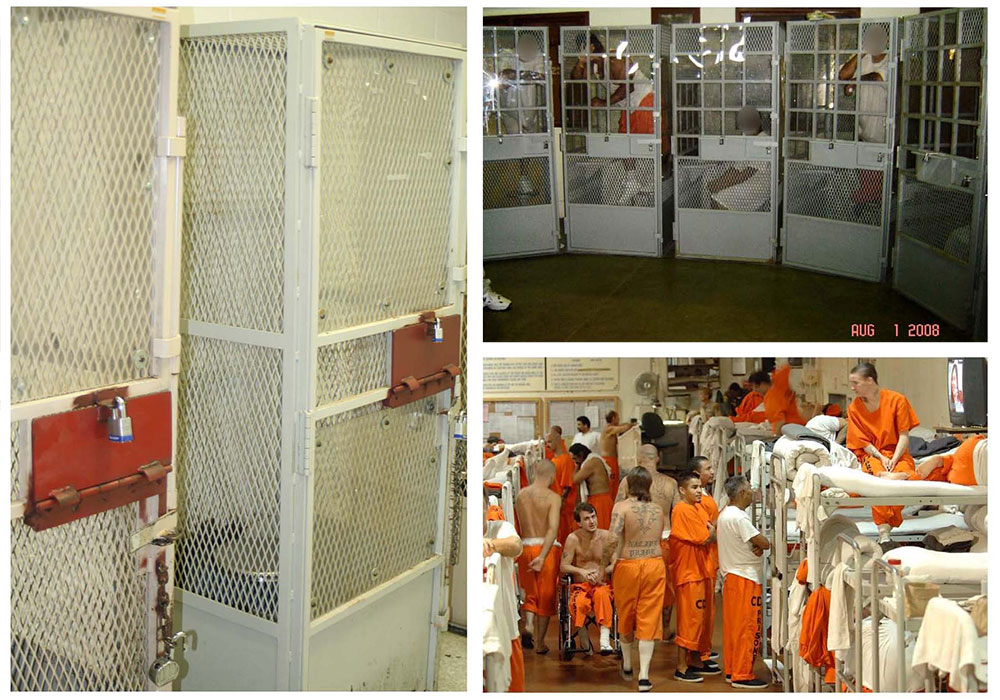
Australia is facing an epidemic, and no, we are not in a law and order crisis. In fact, that very perception is part of the problem of Australia’s rampant prison overcrowding.
Australia’s prison population is increasing
Recent BOCSAR statistics show a 10% increase in Australia’s prison population over the past year. This results in a ten year high of 33,791 prisoners nationwide. NSW suffered the worst effects. However, even as the State’s prison population climbed over 11,500, the State Government neglected to build new prison facilities to accommodate the growth. Parklea Correctional Centre is 51% over capacity. In some facilities three prisoners are cramming into cells designed for one. Queensland’s prison population increased by 20% in the past two years, resulting in 1,600 prisoners sharing cells.
The fiscal costs of overcrowded prisons are enough in themselves to justify intervention. South Australia’s Correctional Services Department last fortnight reported a budget blowout of $9 million, due directly to the use of “surge beds” in over-capacity jails. However, when one considers the human costs of overcrowding inaction becomes inexcusable.
Overcrowding in prisons leads to negative outcomes for inmates
There are tomes of evidence demonstrating the mental, physical, emotional and psychological harms that overcrowding can cause prisoners. Overcrowding makes it more difficult to administer family contact, medical attention, recreation and time out of cells. Attempts at rehabilitation become fruitless in increasingly disorderly and tense prison environments. As Professor Robert Canton (De Montfort University in Leicester, UK) summarised: “overcrowding makes it almost impossible to do anything worthwhile with prisoners”.
More gravely, prison overcrowding has a consistent link to increased rates of self-harm. A particularly harrowing story surfaced in 2013, of an ACT man on remand who took his own life after being transferred out of the at-capacity Crisis Support Unit room.
Prison officers also suffer from prison overcrowding
Prison personnel face greater risk of violent incidences in overcrowded environments. In fact, dire overcrowding in Western Australia prompted an angry response earlier this month from the WA Prison Officers’ Union, who demanded that the State Government immediately address the problem.
Prisoners sued Correctional authorities in California
Prison overcrowding is by no means a uniquely Australian problem. Professor Jonathan Simon’s excellent book Mass Incarceration on Trial analyses the case of Brown v Plata, brought by Californian inmates to challenge the constitutionality of the appalling conditions created by overcrowded prisons. A judge in the case felt such disturbance by the stories of “dry cells” – cubicle-sized metal cages in which mentally ill patients defecated where they stood – that he attached images of the cells to his judgement. Australia’s overcrowding epidemic has not yet reached similar conditions. However, there is everything to suggest that without redress, this is the trajectory of our prison system.
The solution to prison overcrowding
So what can we do about overcrowded prisons? Professor Canton argues that increasing capacity (by building new prisons, etc.) is the wrong solution. This is because “[a] society that is spending its money on more prisons while closing hospitals and cutting spending on schools and universities has lost its way”. Canton proposes a “new approach” of reducing the length of prison sentences by 10%. His argument is worth reproducing in full:
“If all sentences were reduced by 10% the prison population would – quite quickly – decline by 10%… Consider a sentence of 20 months. This would be reduced to 18 months under the 10% proposal. Choosing the most appropriate length of a sentence is a matter of custom and practice – and it varies considerably between countries. No one could plausibly argue that 20 months is just right, but 18 won’t do. Even for the most dangerous offenders, it seems odd to argue that the public is protected by detaining someone for ten years but safety would be jeopardised by releasing them after only nine. And does anyone think that a potential offender would be undeterred by four-and-a-half years, but would be stopped by the prospect of five?”
Canton’s proposal is certainly persuasive, but is not the whole of the solution. Even with a 10% cut in the prison population, if incarceration rates continue to rise then population will eventually return to, and then exceed, the previous level.
Political considerations lead to bad laws with bad outcomes
The root of the problem needs addressing, and to do that certain misperceptions need correction. The general overestimation of crime rates gives greater political traction to ‘tough on crime’ policies. This results in hard-line legal policies. These policies (such as NSW’s new mandatory sentencing regime and tougher bail laws) operate to increase the prison population. With the breakdown of rehabilitation programs, it is also obvious that increased prison rates will (ironically) increase crime once people go back into society. In this way, the misperception of crime rates is a self-fulfilling prophecy of the worst kind.
Governments need to spend on more effective criminal justice education and prevention rather than bearing the long-term cost of recidivism. Smart justice, after all, is the only justice.
If you have an issue with Corrective Services or other imprisonment, contact our lawyers today.





